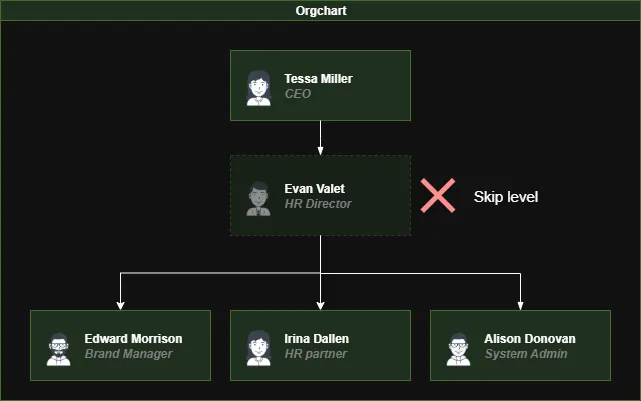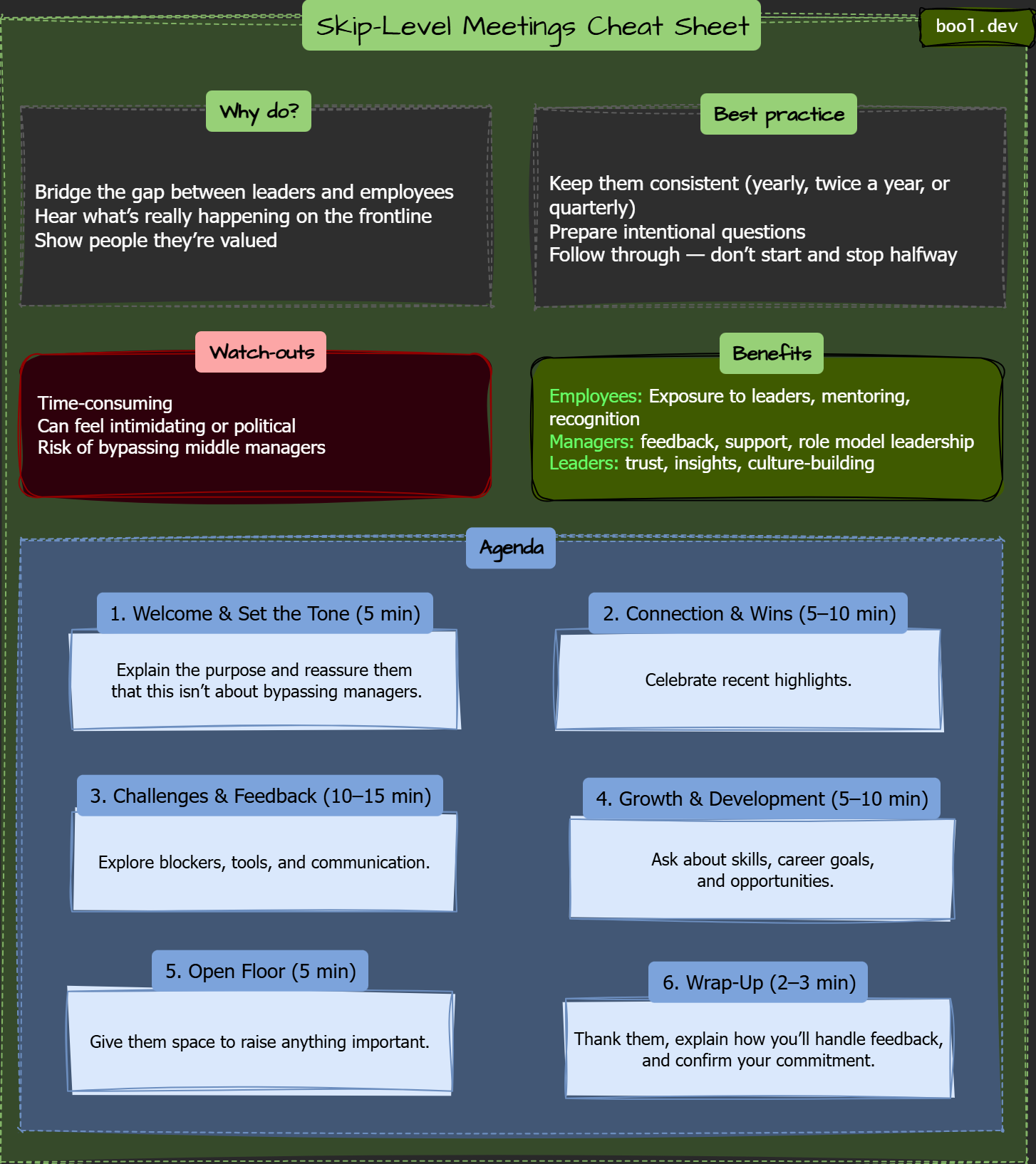Skip-Level Meetings

Most organizations have multiple layers of management. Employees report to their managers, who in turn report to senior leaders. However, this structure can create a disconnect—senior leaders often don't hear what's happening at the frontlines, and employees may lack direct access to decision-makers.
This is where skip-level meetings come into play. These meetings involve one-on-one or small group conversations between senior leaders and employees who typically would not interact directly (thus skipping over the middle manager). When executed effectively, skip-level meetings build trust, reveal valuable insights, and strengthen team dynamics.
Why Do We Need Skip-Level Meetings?

- They reduce the distance between leadership and employees.
- Leaders get an unfiltered view of what’s really happening.
- Employees see that leadership values their voices.
- Middle managers feel supported when their leader engages with the team.
Benefits for Everyone

For employees:
- Direct exposure to senior management.
- A chance to share feedback and ideas.
- Feeling valued and recognized.
For managers (the skipped level):
- Learning by example from senior leaders.
- Receiving feedback to help them grow.
- Knowing their boss stays connected instead of detached.
For senior leaders:
- Building stronger trust across the team.
- Understanding frontline challenges firsthand.
- Spotting opportunities to improve culture and processes.
Things to Watch Out For

Skip-level meetings aren’t always smooth. Leaders should be mindful of these risks:
- With large teams, it’s a serious commitment. Don’t start and then abandon halfway.
- Some employees may be nervous or suspicious if they’re not used to open communication.
- A few people might use the opportunity to complain or push personal agendas.
- If not managed carefully, employees may try to skip their manager and go straight to senior leadership.
How Often Should They Happen?

There’s no one-size-fits-all rule. Some leaders do them once a year, others quarterly. The key is consistency: if you commit, follow through.
- Once a year: still valuable.
- Twice a year: better.
- Quarterly: golden, if you have the time.
Even once a year can build trust if you make the conversations intentional and meaningful.
Sample Questions to Ask

- Connection & Wins
- What do you enjoy most about your current work?
- What’s been your biggest win lately?
- Challenges & Feedback
- What’s getting in the way of doing your best work?
- If you could change one thing about how our team works, what would it be?
- Feedback on Management
- How’s your manager supporting you? Anything that could be improved?
- Do you feel leadership communicates clearly and openly?
- Growth & Development
- What skills are you most interested in developing?
- Are there opportunities you wish you had more access to?
- Culture & Team Dynamics
- Do you feel included and valued in the team?
- What’s one thing we could do to make this a better place to work?
30–45 Minute Agenda

- Welcome & Set the Tone (5 min)
Explain the purpose and reassure them that this isn’t about bypassing managers. - Connection & Wins (5–10 min)
Celebrate recent highlights. - Challenges & Feedback (10–15 min)
Explore blockers, tools, and communication. - Growth & Development (5–10 min)
Ask about skills, career goals, and opportunities. - Open Floor (5 min)
Give them space to raise anything important. - 6. Wrap-Up (2–3 min)
Thank them, explain how you’ll handle feedback, and reaffirm your commitment.
Skip-Level Meetings Cheat Sheet

Final Thoughts

Skip-level meetings focus on fostering connection, trust, and growth. They serve as a reminder to all participants—employees, managers, and leaders—that they are part of the same team. When conducted with the right balance of time, trust, and openness, these meetings can become one of the most effective tools for creating a healthy, transparent, and engaged workplace.
